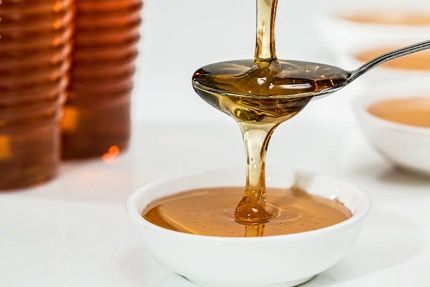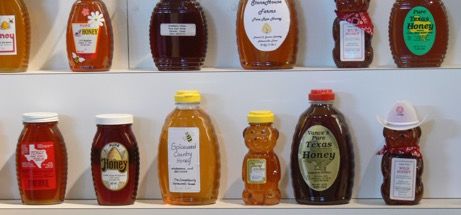We are all passionate beekeepers, yet some of us have to (partially) make a living from this passion. So how does a beekeeper earn money?
In most cases, professional beekeepers live from the sale of bee products, namely honey, pollen, propolis, royal jelly or from the sale of whole colonies or living queens. In this article, which is divided into two parts, we give an insight into the honey market. In this second part, we examine the strategic methods for increasing your honey sales.
Here is the link to the first part: Honey sales channels (Part I/II)

How do I increase my sales?
How can I win more customers? How can I sell honey at a higher price? We will try to answer these questions by explaining some marketing principles that can be applied by all beekeepers.
We will explain step by step how you can build a simple and immediately applicable marketing strategy.
Some of these tips will only be useful for those who sell honey directly to the end consumer, others can also be used by those who work through retail or wholesale. Let’s get started!
Strategic marketing in beekeeping
There are several steps to take if you want to become a beekeeper and sell your honey. These steps are segmentation, targeting and positioning.
Choosing the best customers – segmentation and targeting in beekeeping
As beekeepers we have limited time and resources at our disposal, so the first step is to understand who our best customers are. In this way, we do not waste time convincing people who are not good customers anyways. This is a crucial point. In addition, communicating with our customers is made easier when you know who they are and what their preferences they might have.
Let’s take a small example: If I want to sell honey to families, it is usually easier to concentrate on the woman and the mother than on the man. She is often the person who buys food in the family context.
To understand who our best customers are, we need to take two steps.
Step 1: Segmentation
Segmentation describes the decision as to how the group of potential consumers with similar needs, should be divided into groups (the segments). The criteria for defining segments are diverse: age, gender, habits, income, geographical location and more.
Examples of possible segments are:
Housewives over 50 who live within 10 km of my workplace. We can actually assume that they have the same desire to buy quality local honey for their family and use it on their bread, when making desserts, or to relieve a cough.
Athletes who take honey to improve their performance or regain energy after training.
SME’s (Small and medium-sized enterprises) within a radius of 30 km who want to give their customers honey as a company gift.

Step 2: Targeting
After defining the individual customer segments, we have to decide which are the best for us. This means which customer segments have the needs that we can cover. The «best» customer does not always correspond to the «most profitable», but it can be the customer with whom we like to work or who helps us more by word of mouth recommendations.
Choosing a type of client is not always easy, but experience always helps. Remember, however, that sometimes it may be necessary to select more than one customer segment because a group may be too small to sell all the honey in a harvest.
To solve this problem, we can also create more general segments. For example, instead of the group of housewives older than 50, I can address all women older than 50.
So if we have a lot of honey, we have two solutions: either many small groups of potential customers or a group with many potential customers.
After we’ve done that, we have to position ourselves.
Positioning
The positioning refers to how my customers perceive me compared to my competitors. The positioning answers the question: How do my customers see me and my product?
Let’s take an example: Does my honey look like a quality product or not? Does it look like a craft or an industry? Does it look like a local product or it this appeal missing? Does it sound healthy or is it just a sweetener which differs from sugar?

It is important to define these points and they should reflect the needs of our customers. Finally, we must remember that positioning is linked to our perception of ourselves and our product, not just reality.
Let’s look at the following example: If I want to position myself as a beekeeper with a honey of excellent quality, I can’t sell my honey for €7 per kilo, I can’t use cheap-looking carton packaging and I can’t try to sell it to a company that uses honey in industrial production. An industrial company will be more interested in a low price than in high quality.
So once we have defined our strategy, we will move on to operational marketing!
Operational marketing – the 4 P’s of marketing
In operational marketing, the 4 P-tool of the marketing mix is often used. We will briefly explain this tool and then move on to the application of additional strategies to increase sales.
The 4 P-tool is used to help the entrepreneur, in this case the beekeeper, to define the decisions to be made in his marketing strategy? Do you think we are speaking a abstract language here? Listen and you will understand!
The 4 P’s of the marketing mix are:
Product: this is the product the beekeeper wants to sell, including the customer experience associated with the particular product (think of: packaging, delivery time, customer relationship, payment methods and much more).
Price: the price the customer pays to buy the honey.
Place: the distribution channels through which we sell our product. We covered this in detail in the first part.
Promotion: the activities, messages and advertising channels through which we reach our customers.
For each of these points, you have to make one or more decisions.
Example: I am a small beekeeper who wants to sell honey to a group of 50 year old housewives from a provincial town, and I have decided to position myself as a beekeeper whose honey is perfect for making culinary desserts.
First, we define the customer’s needs.
My customer is a 50-year-old housewife from a provincial town, she has two children at university, a husband who works in a local company. She is a down-to-earth person, with an average income that allows her to buy everything she needs without overdoing it. This woman loves to bake cakes for her family, she wants to use quality products that don’t cost too much. In addition, she loves local products. She does not buy on the internet because she is not familiar with it. She often buys at the supermarket or at the local market. She has many friends similar to her and meets them several times a week.
Next I define the 4 P’s of the marketing mix according to the type of customer and the chosen placement.
Product
If I want to make my customer happy, what honey do I have to deliver? Where does my customer use the honey for? How big must the jar be? What is the best honey for desserts?
My customer uses the honey for desserts, so the jar should not be too small, otherwise it would always be empty. I decide to sell jars of 500 g or 1 kg.
My customer is down-to-earth. It is not necessary to have too sophisticated a packaging, but I could put recipes in a flyer to present them with the glass or directly on the label. She would certainly like that.
Finally, I know that acacia honey is best for making desserts, so I recommend it to her.
In summary, I sell acacia honey in 500 g and 1 kg jars with a simple label and some printed recipes.
Price
My honey is a quality product and my customer belongs to a family with a normal income. I should not sell my honey at the supermarket price, otherwise the quality is not appreciated enough. However, the price must not be extravagantly high, otherwise my customer would not buy the honey any more.
I decide to sell the honey for about 22 to 25 CHF per kg.
Place
My customer buys most of the groceries in the supermarket or in small local shops. Sometimes she buys directly from the manufacturer. So I decide to sell through small retailers in the city or participate in the local market and sell my honey directly. So I go where it’s most convenient for my customer.
Promotion
My customer spends a lot of time on Facebook, with her friends or with normal daily activities. So in order to promote my honey, I could advertise on Facebook and be contacted by phone. I could also try to improve the word of mouth advertising of my current customers, or I could make an agreement with small local shops to publish my flyers. In these flyers I could have some dessert recipes printed.
In short, there are many ideas. The most important thing is to understand the nature of thinking.
We have now learned how to apply some marketing theories to our honey sales. These activities are primarily useful to develop a marketing strategy.
Now we focus on another very practical issue.
How can I increase my honey sales?
The honey-turnover describes the income from honey sales, i.e. the money that «flows into our pockets». The turnover does not refer to the profit. That is what «remains in our pocket».
Mathematically this is relatively simple. The turnover (U) corresponds to the number of our customers (K) multiplied by the average order value (B) in CHF. So:
U = K x B
So how can we increase this turnover? There are two possibilities:
We increase K, i.e. the number of our customers.
We increase B, the average order value.
We can see here that more customers is not the only way to increase our sales. In practice, it is often easier to increase the order value of our existing customers who already trust us.

Increasing the number of customers
In order to increase the number of our customers, there are different strategies. It depends on what kind of customers we want.
We must always assume that those who see us for the first time may be skeptical about buying our products. However, the customer acquisition is nca be easier compared to more expensive products, thanks to the affordable price of honey.
In this phase it is our goal to build a relationship with our customers by spreading our «positioning» at the same time. Do you remember what this means? It is our image, what our customers think of us.
There are many ways to win new customers, but we can divide them into two different categories.
Winning new customers via the Internet:
Free use of social networks: This activity consists in publishing on the social channels (Facebook, Instagram or others) different content concerning the product, the company or beekeeping in general. Remember that these messages are only seen by a small part of those who follow you on social networks, as this is the way social networks work.
Use of non-social networking platforms: In this case, the content you create will be shared on other platforms such as blogs, recipe sites, natural products or others. If you use external platforms, don’t forget to include a reference to your honey.
Paid advertising on Facebook and Instagram: In this way, you can choose to show your content to groups of people who share certain interests, age, geographic location, and more. If you’d like to learn more, take the free Facebook Blueprint course.
Paid advertising on Google: With Google Ads, you can showcase your ads on two different channels: the Google search results page, or specific websites, YouTube channels, and apps. If you want to deepen this discussion, you can follow the Google courses for ads in the Academy.
Win new customers offline:
Increase your customers’ word of mouth: There are many ways to stay in touch with your customers. This requires creativity and inventiveness. Often small, sympathetic actions can make the difference. For example, you can launch a simple honey contest, where participants can win some honey. Or a painting competition for children. Attention: often there are specific rules for commercial competitions, which have to be observed.
Using distribution channels: Use different distribution channels such as participating in local markets or an open day at a speciality shop in the neighbourhood.
Collaborations: Collaboration with similar but not competing activities. For example, a wine shop could display your flyers and you could pass them on to your customers.
Bee events: Organize a meal or workshop for schools. These activities are often time consuming, but give a lot of joy and bring some people closer to our beautiful world of bees.
Although there are many more ways to win new customers, we will close them here. We have given some ideas, but the ways are truly endless. It is now up to you to find the right way.
Increase of the average order value per customer
There are many ways to increase the order value for existing customers, but I would like to focus on two general principles first:
The customer who has a relationship with us and therefore trusts us, is the one who buys more.
To improve the relationship with my customer, I have to give him a little more than my competitors give him. Give more than a supermarket, in terms of quality, experience, advice or anything else, and your customers will always come back to you.
Every company has a fundamental tool for this: the «customer list». By this we mean a list, paper or digital, with the contact details of our customers.
Where is this list good for? Well it is definitely easier and cheaper to communicate with someone who already knows us and trusts us than to communicate with someone who doesn’t know us.
This list can be used to send targeted messages, to communicate news about our products, to invite customers to events we organize, or to give discounts or useful advice on using a particular honey.
So how do I create a customer list? Paper and pen, Excel or if you really want to do it professionally with a Customer Relationship Management tool, CRM for short. The list must basically be a table in which you enter the first and last name (optional) and the type of contact (email, phone, address) that we will use to communicate.
To send messages to these contacts, there are several tools, some of which are listed here: Mailchimp to send newsletters, WhatsApp Business to send messages to your customers via WhatsApp, Manychat to send messages on Facebook (Messenger) and Trendoo or Aimon for text messages.
Remember that continuous and meaningful communication is one of the best ways to maintain customer loyalty.
By strengthening customer loyalty, you can increase the order value per customer. The following things you can do:
Increase the price in a justified way. Do you sell a good product and your customers recognize this? Increase the price. If you don’t appreciate your honey, nobody else will.
Show the advantages of honey, for example with information about the recommended daily dose, suitable desserts for the season, etc. In short, give honest advice on how to use honey well and often.
Create different products at a higher price. For example, you can create a «Wedding Set» as a gift idea with a beautiful decoration where you can sell the same amount of honey at a more expensive price.
Search for different customers. Each type of customer has a different income. For example, if you sell your honey to a large company that passes it on to its business partners for Christmas, you can increase the price compared to a housewife from a small town.
«Up-selling» and «Cross-selling». Reference to higher quality or related products that can be bought together.
We summarize.
In order to increase the spending of our customers, we must first bind them to us with a customer list and win their trust. This means that we must always treat them well and communicate with them.
Conclusions
Let’s just get it straight!
In order to develop a good marketing strategy as a beekeeper, you must first define who your customers should be and how they should perceive you (segmentation, targeting, positioning). On this basis you have to make decisions within the 4 P’s of marketing: Product, price, place and promotion. In this way, you choose what you want to sell, where and at what price, and how to promote it.
You increase your turnover either by winning new customers or when existing customers buying more frequently and large quantities from you
To achieve this, it is essential to build a trusting relationship with your customers. This is achieved through honest work and constant and useful communication through the contacts on your customer list.
The activity of the beekeeper does not stop with the beekeeping anymore. In particular with direct sales, some entrepreneurial skills are needed. But don’t worry – everything can be learned.
Hereby we have arrived at the end. I hope you liked the article. If so, share the article with your beekeeper friends and if you want to delve deeper into this topic, just write to me at pp@vatorex.ch and I will gladly help you.